
WOOD
Wood is a natural, renewable and sustainable material which, due to its versatility, can be used for a multitude of projects, such as construction, decorative, artistic, etc.
At Onesta, based on our firm objective of promoting wood in society, we support projects and initiatives that help give visibility to this material and disseminate all its benefits. We participate in and support actions that help to promote the use of wood and show its versatility.
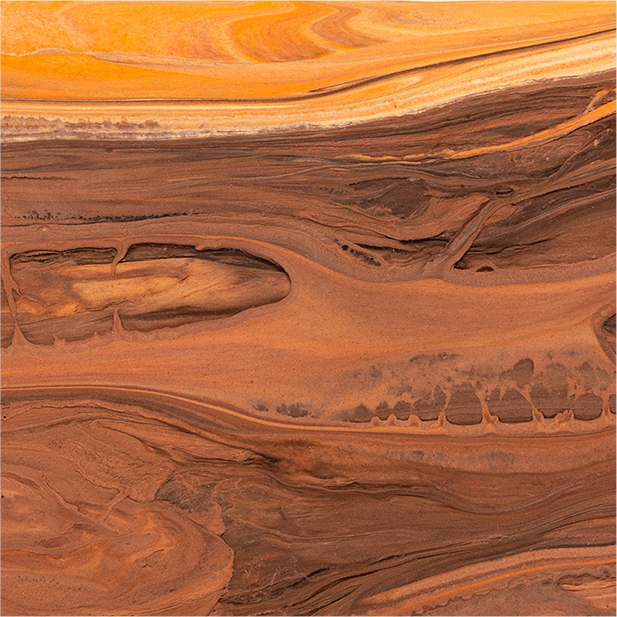
SLOW – AHEC
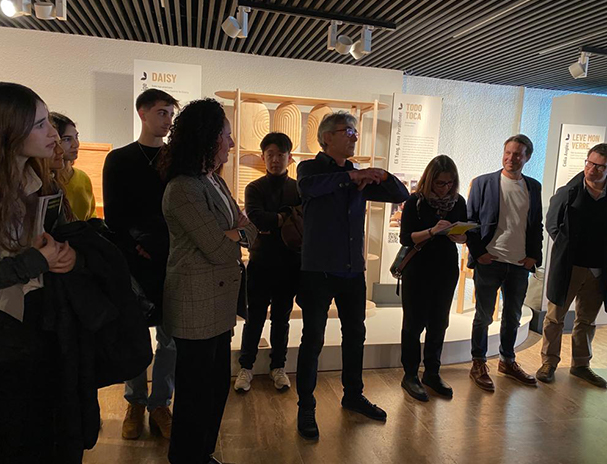
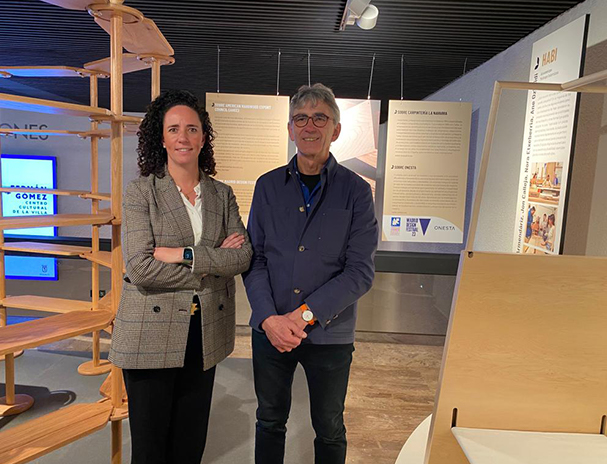
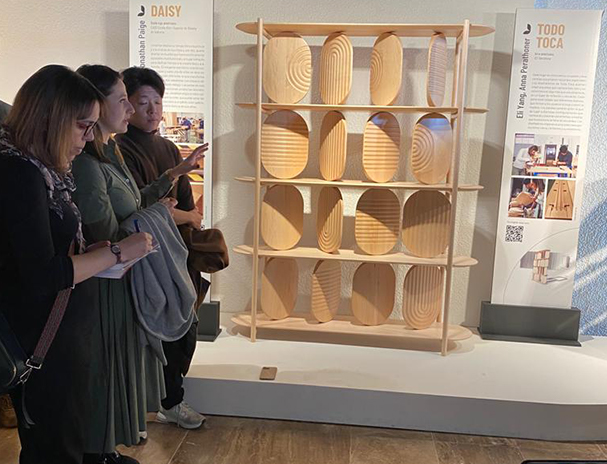
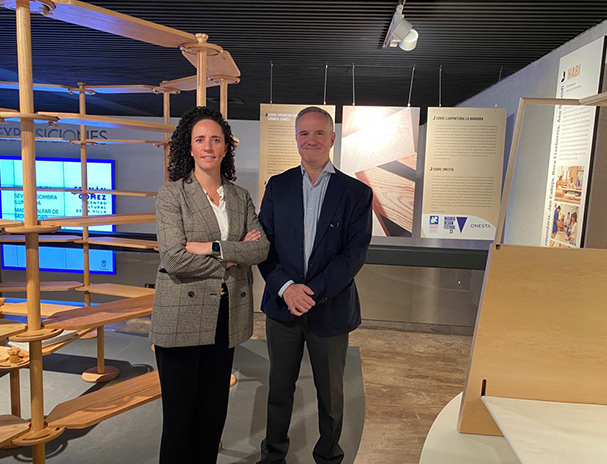
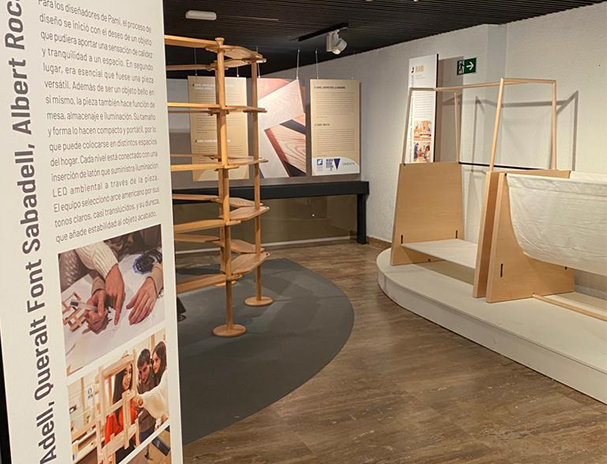
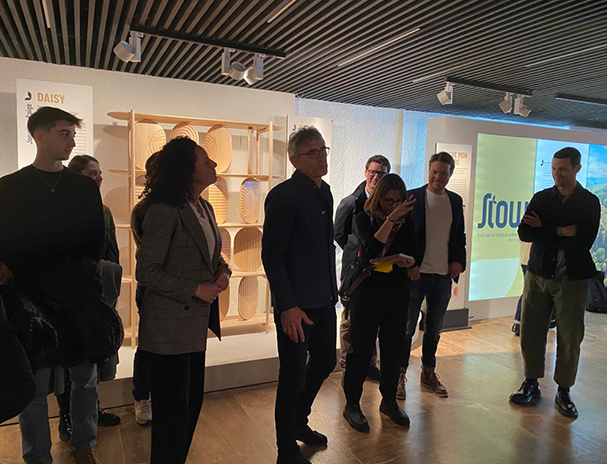
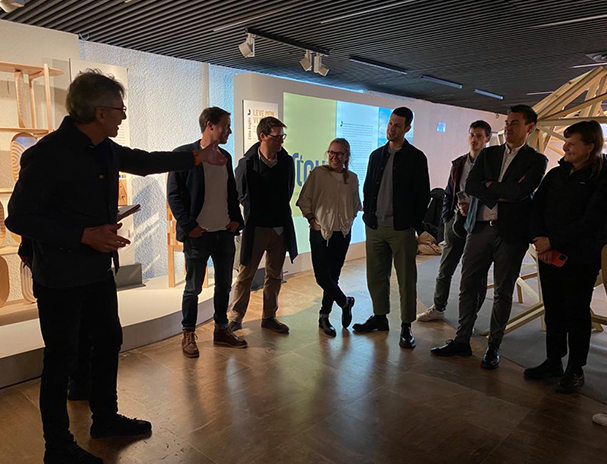
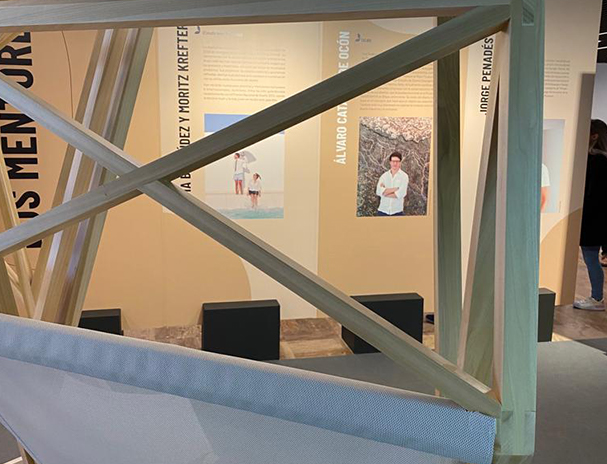
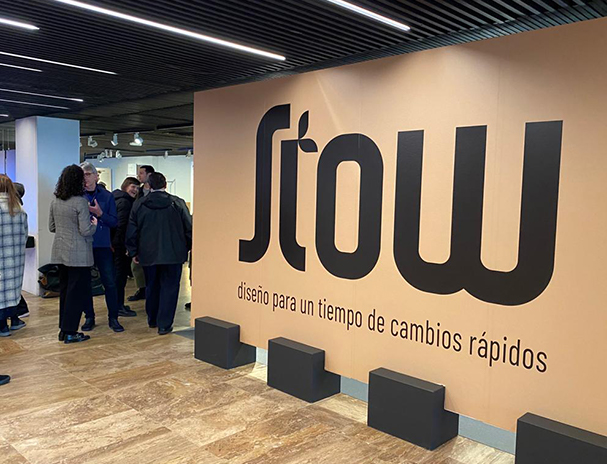
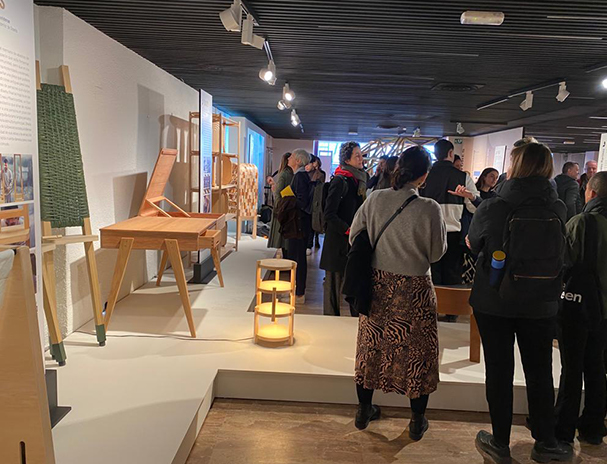
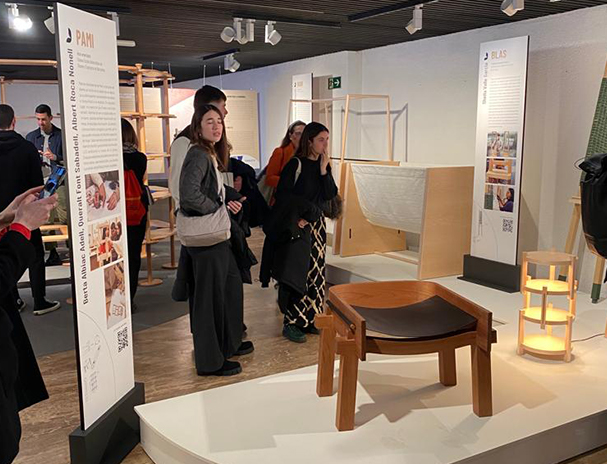
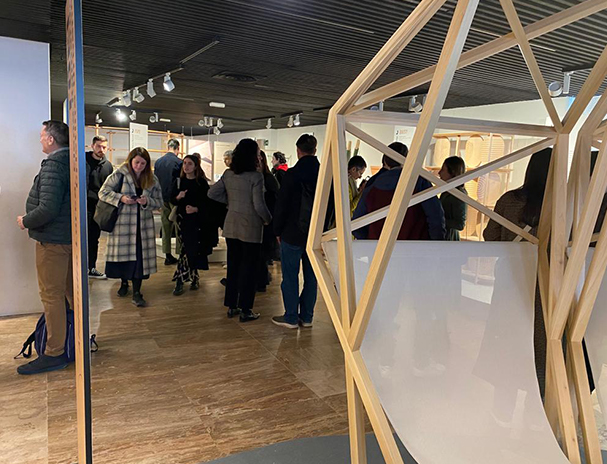
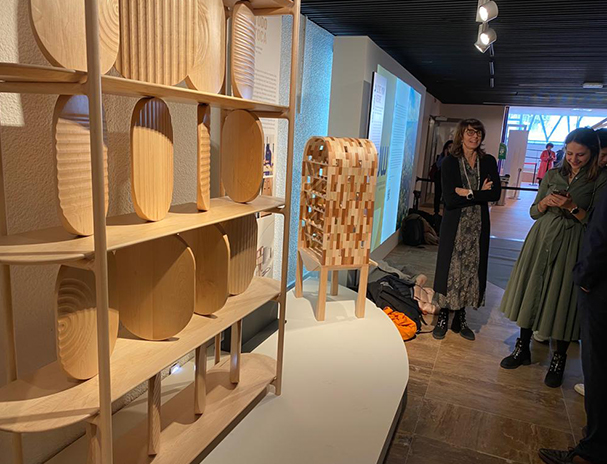
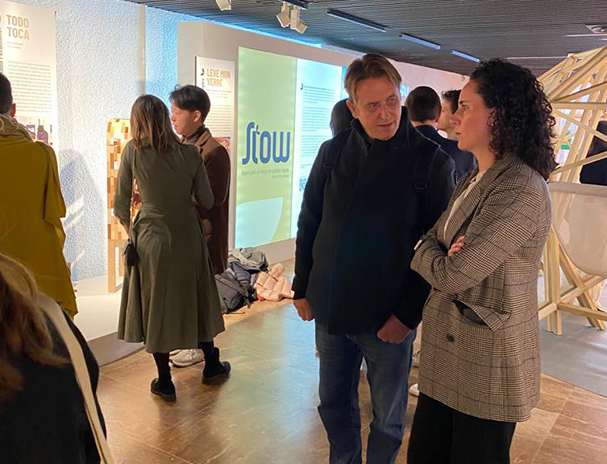
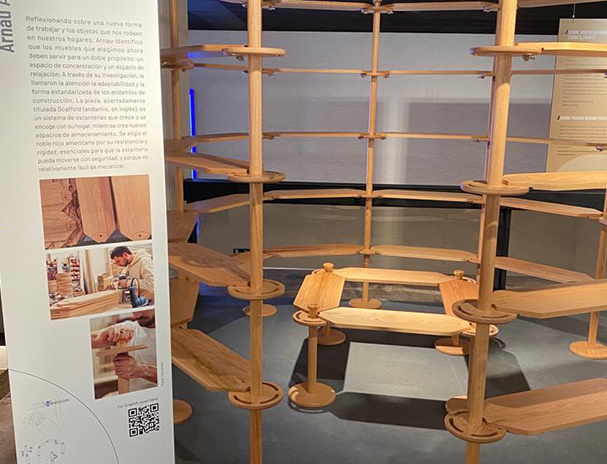
This project, under the slogan “Slow design for fast change”, brings together the work of 17 students selected from 9 design schools in Spain, sponsored by Onesta.
The projects were mentored by Inma Bermúdez and Moritz Krefter (Studio Inma Bermúdez), Álvaro Catalán de Ocón (ACdO) and Jorge Penadés (Oficina Penadés) who, together with the AHEC team, worked with the students to hone their ideas and shape them with a selection of sustainable American woods.
The prototypes were handcrafted at Carpintería La Navarra in Madrid, resulting in aesthetic and functional works, ranging from side tables to a folding screen bookshelf, a desk and a reinvention of the chair.
The works were shown for the first time from 7 February to 12 March 2023 at the Fernán Gómez Cultural Centre, as part of the official programme of the 2023 Madrid Design Festival.
The participants of this project were:
Jonathan Paige, EASD (Valencia School of Art and Design); Berta Albiac Adell, Queralt Font Sabadell; Albert Roca Nonell, Elisava Barcelona School of Design and Engineering; Cèlia Anglès, ESDAP – Llotja Campus (Catalonia School of Design and Visual Arts); Arnau Anoro, ESDi (Higher School of Design in Sabadell); Sheila Valle García, ESDIR (La Rioja Higher School of Design); Alejandro Lorca, Elena Romero, Cristina Urbano, ESNE (University School of Design, Innovation and Technology); Eli Yang, Anna Perathoner, IED Barcelona; Daniela González Martínez, IED Madrid; Natale Armendáriz, Jon Calleja, Nora Etxeberria, Ane Ozkoidi, Mondragon Unibertsitatea.
Miracielo Segoviano
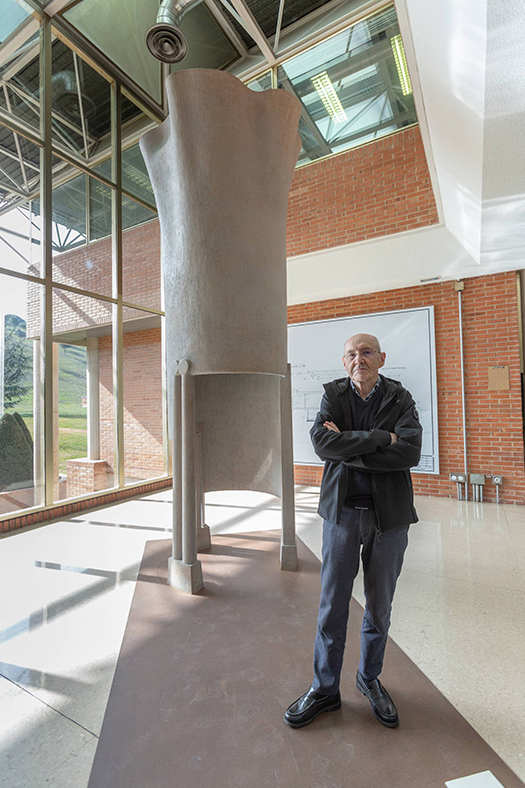
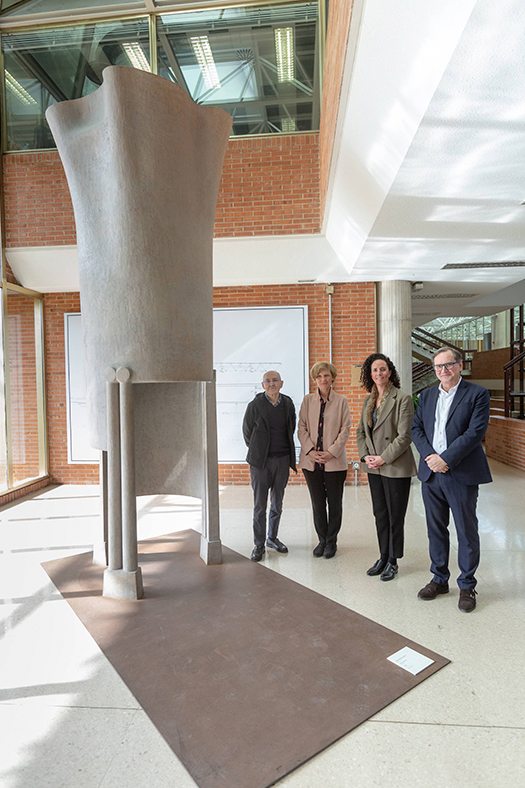
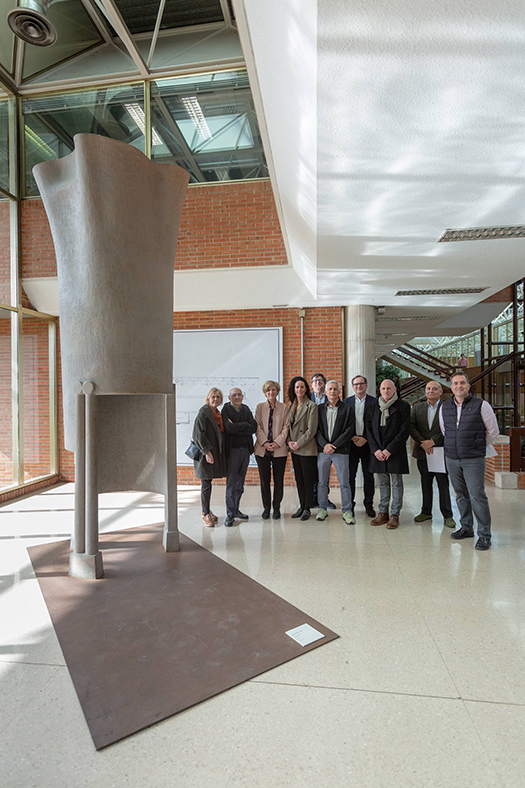
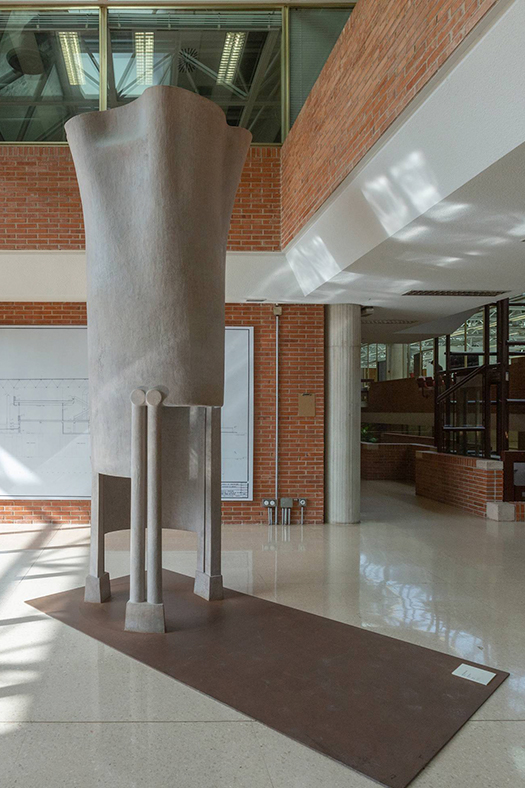
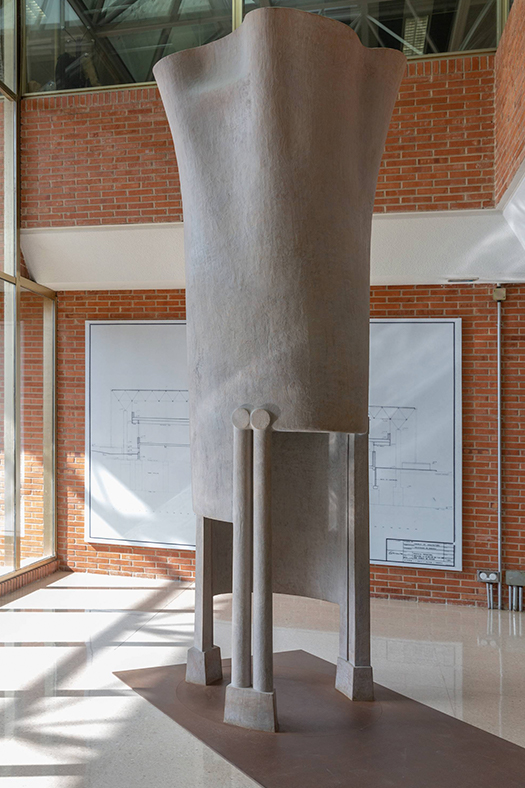
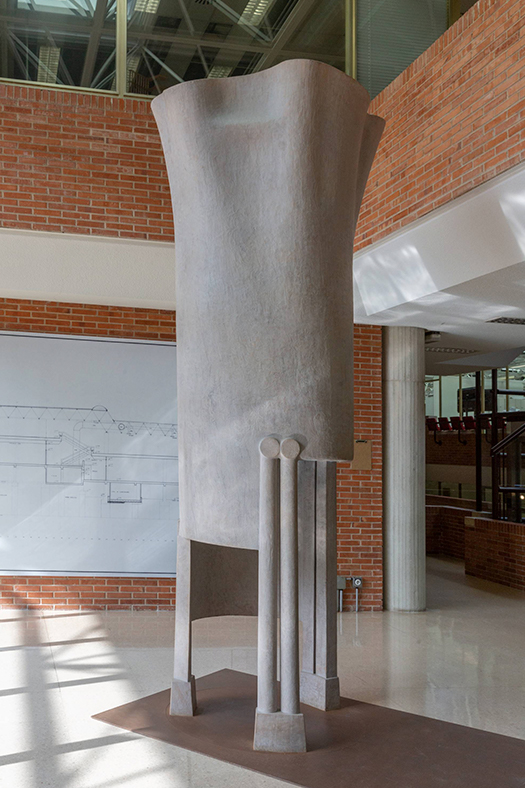
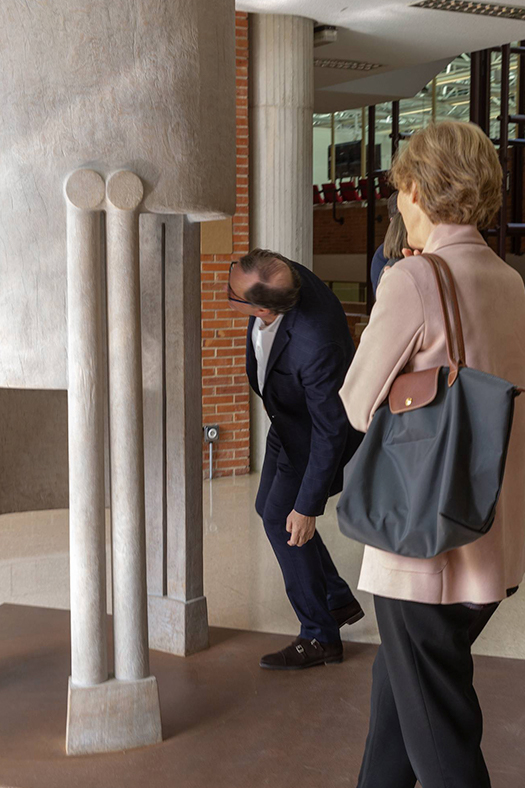
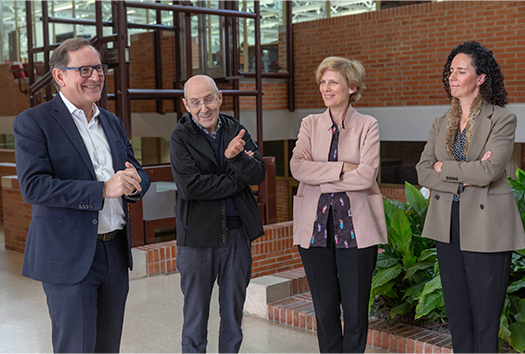
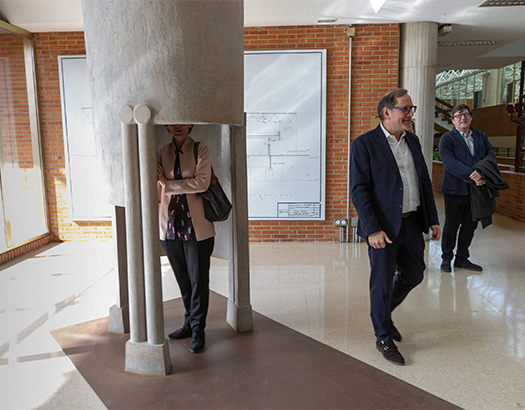
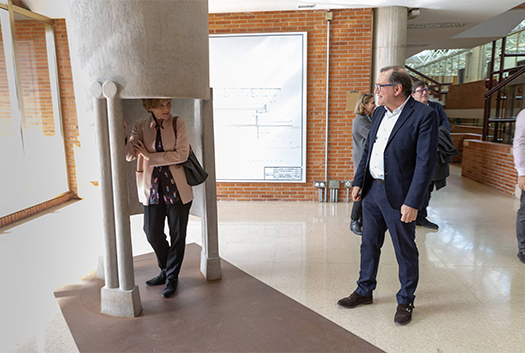
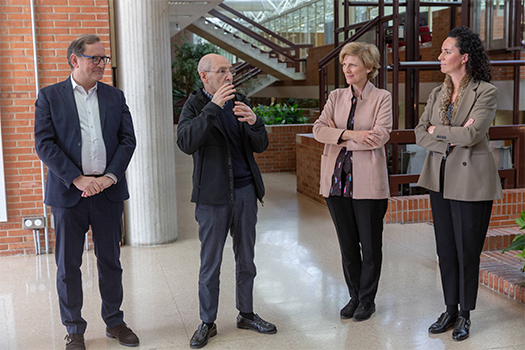
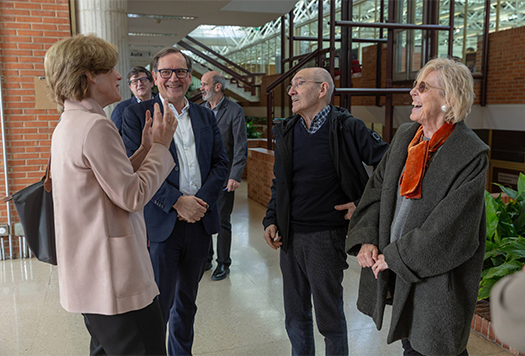
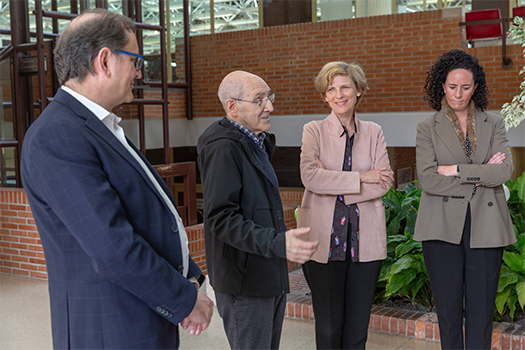
This project was carried out in collaboration with the School of Architecture of the University of Navarra to highlight the value of wood, with a sculpture by José Ramón Anda.
On the occasion of the Onesta Wood Chair, Anda donated this sculpture, which was made between 2005 and 2007 and is more than three metres high, to the UNAV School of Architecture. The sculpture was created from an empty banana trunk and symbolises the union between nature and construction, highlighting the value of wood and its use in sustainable construction.
The artist of the work, José Ramón Anda, explains that: “The sculpture gets its name from the fact that the tree is from Segovia. The trunk is inverted, with the roots pointing upwards, making it a ‘miracielo’, meaning sky gazer. . The idea for the name also comes from a memory of mine: years ago, when you entered the province of Segovia, you were greeted by a sign that read <<‘Segovia, incomparable skies’>>”.
The use of the triangle, the circle and the square and the paired columns created from the trunk itself stand out in the work ‘Miracielo segoviano’. The artist notes that: “I wanted them to be thin so that anyone who wanted could enter the trunk, allowing me to show another perspective and, at the same time, making the upper part (the roots) stand out more. It takes a great deal of dedication to produce this type of work and it is a pleasure to be able to display it at the school”.
MIRALLES FOUNDATION
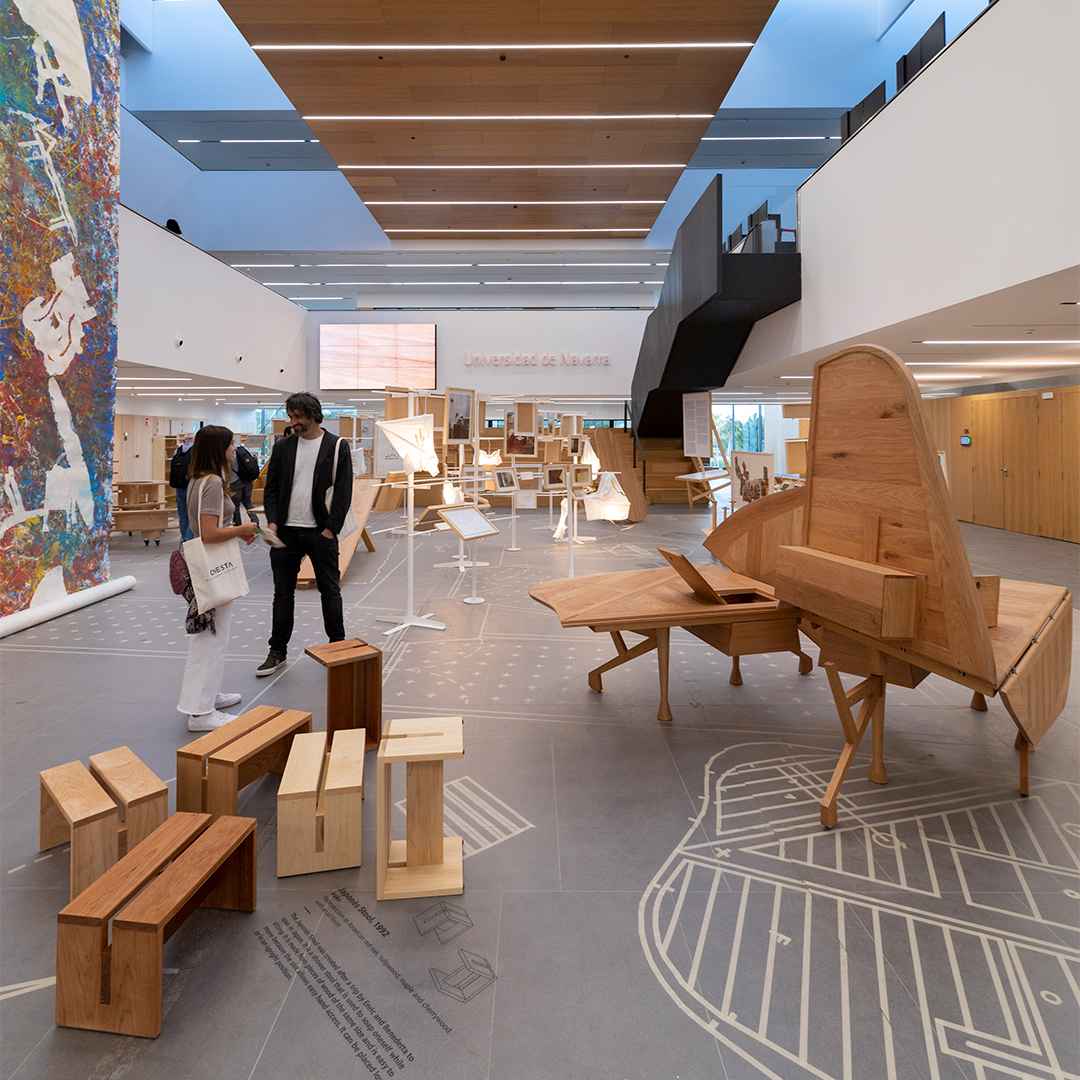
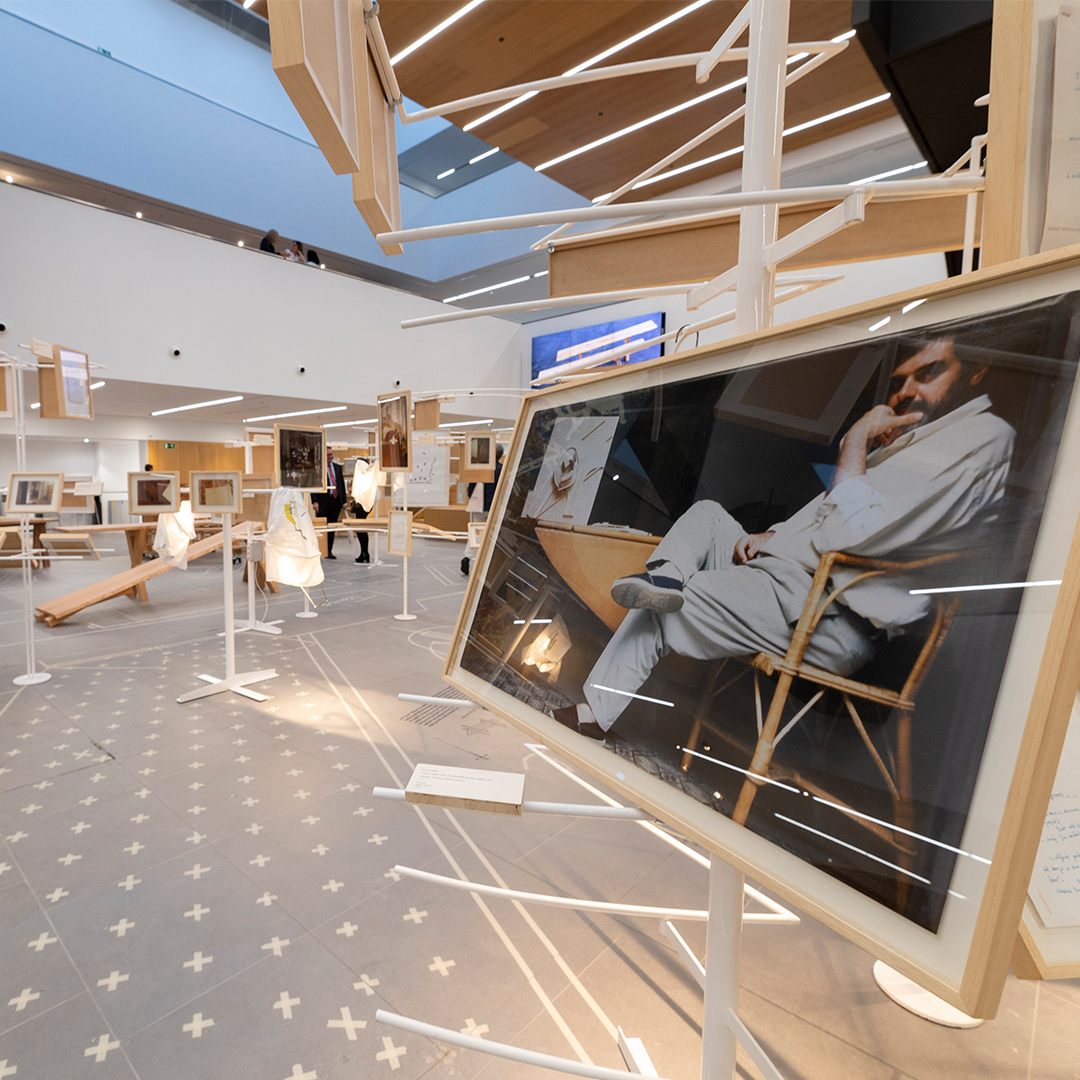
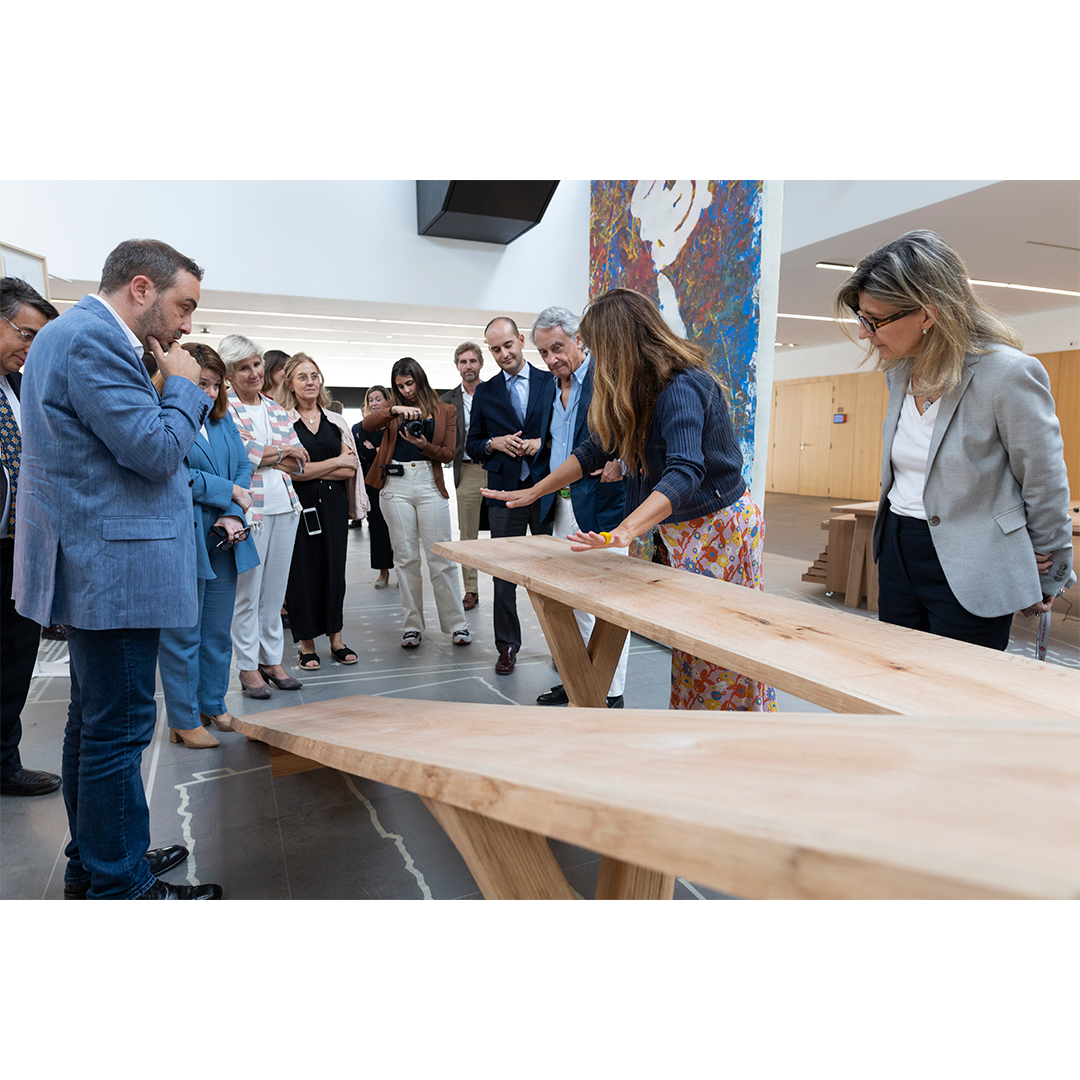
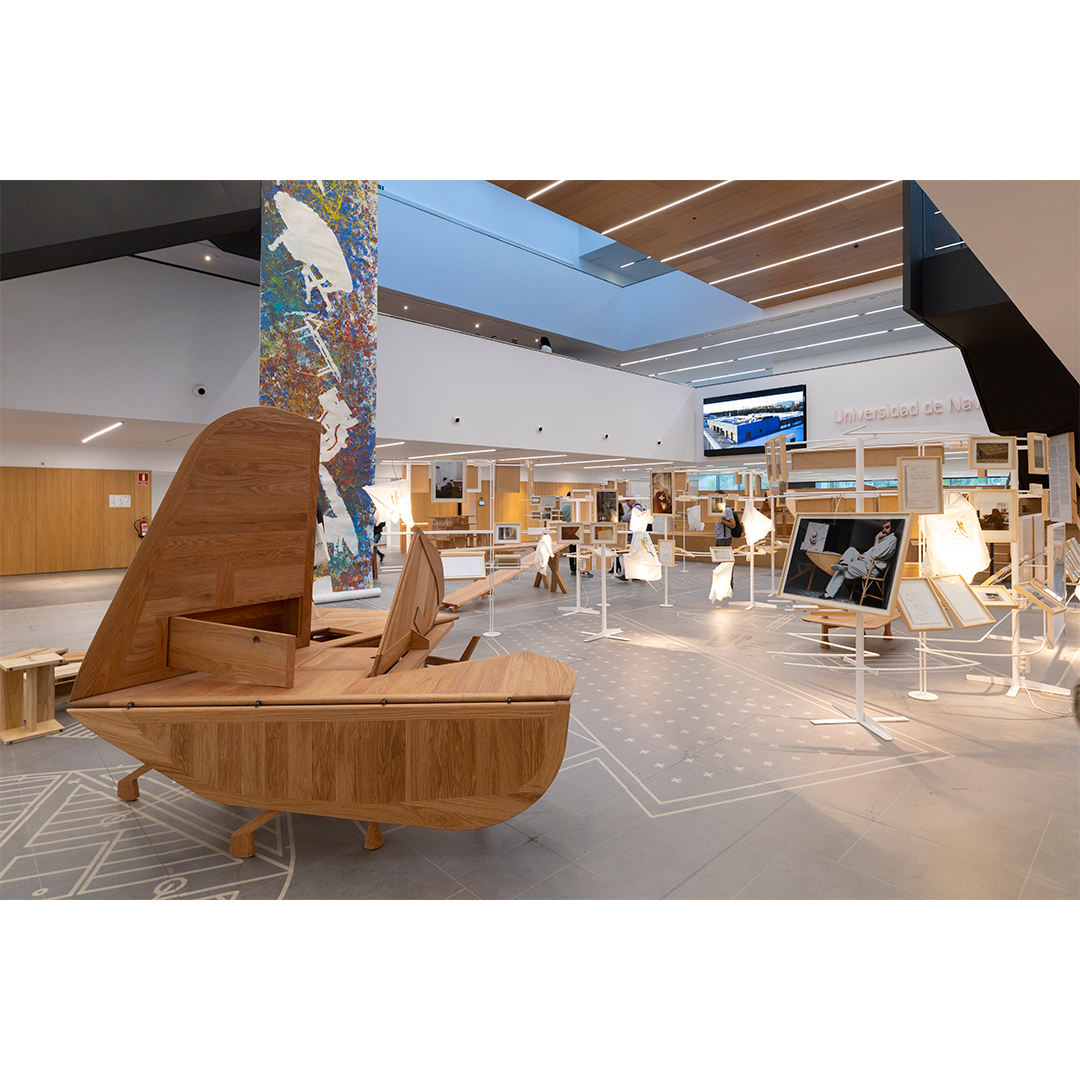
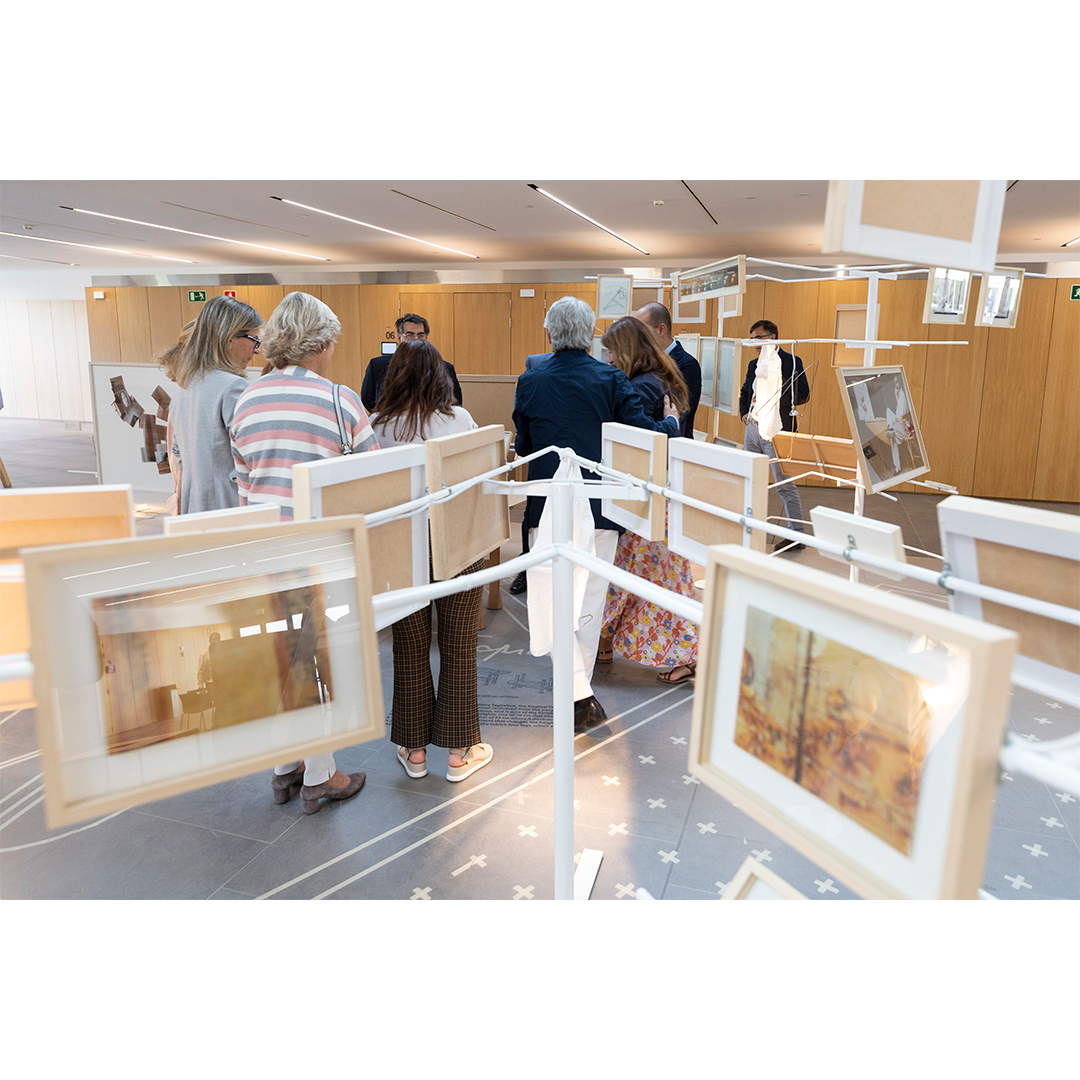
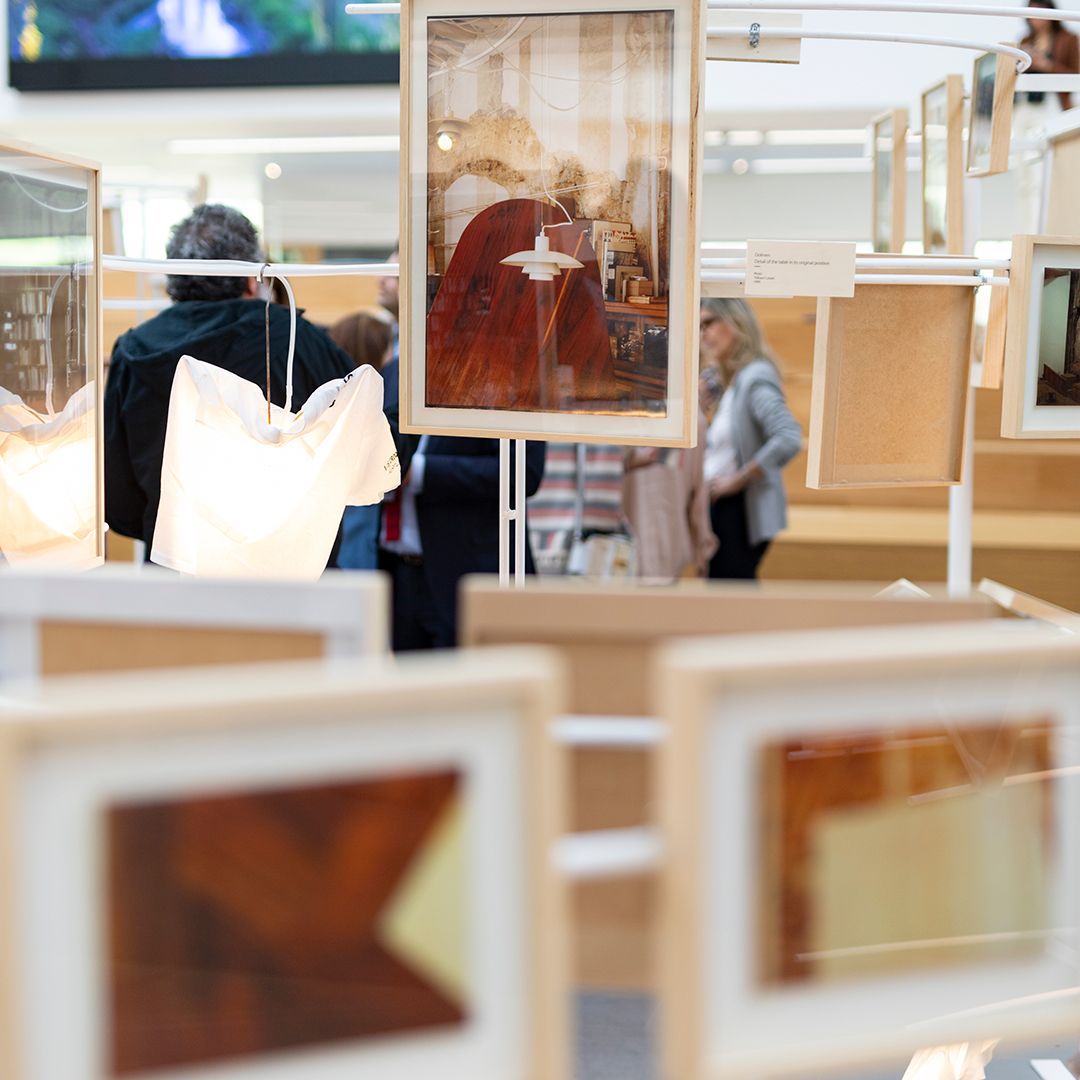
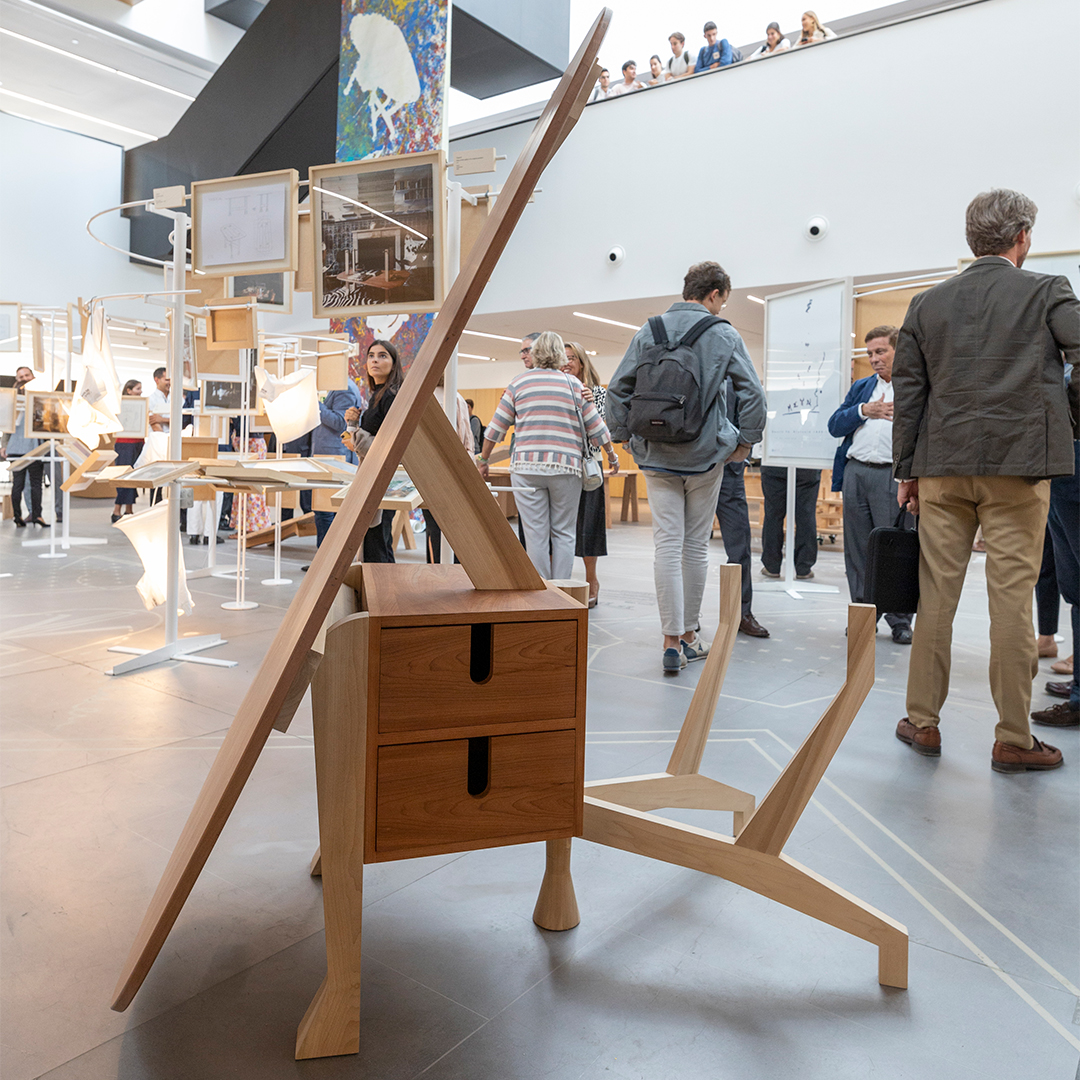
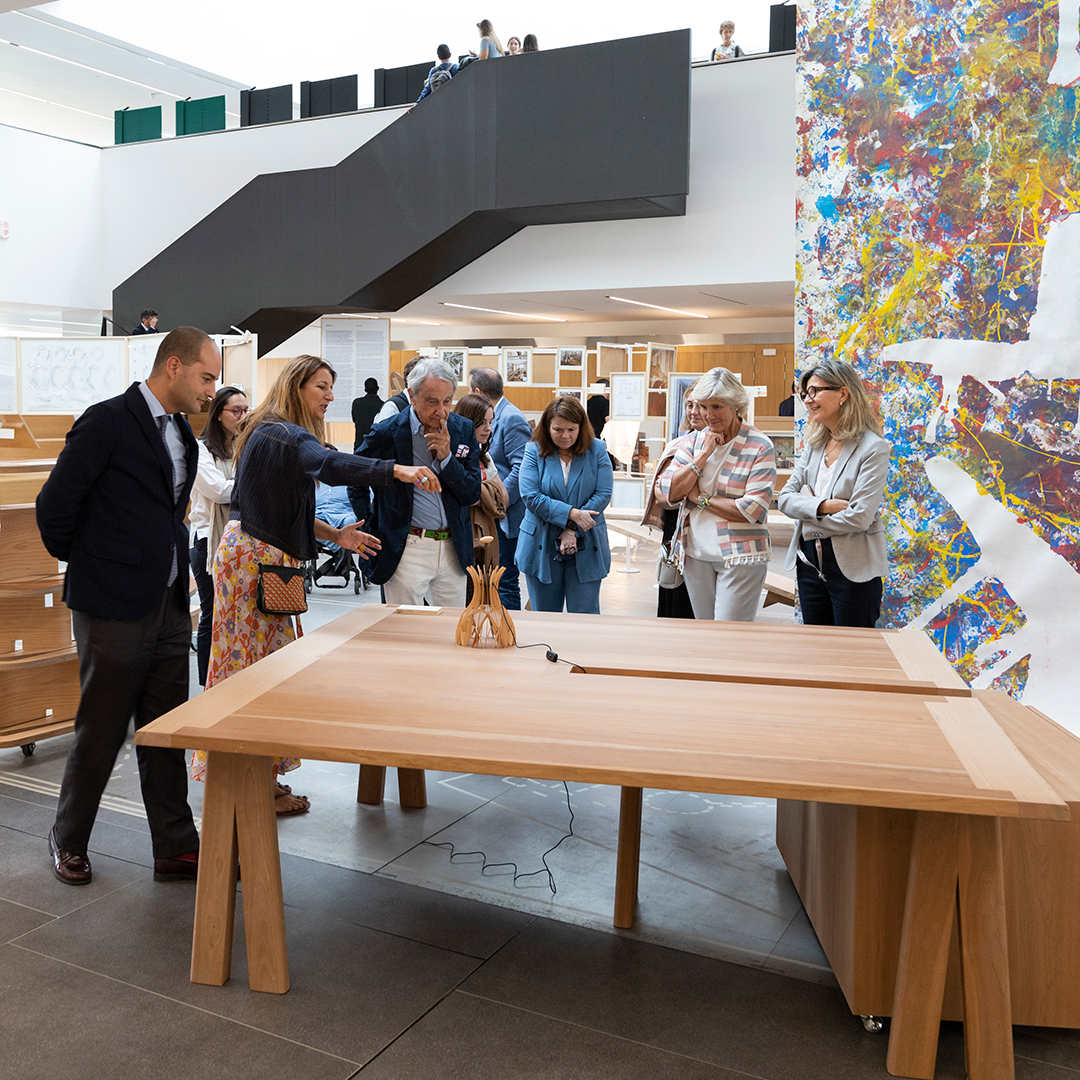
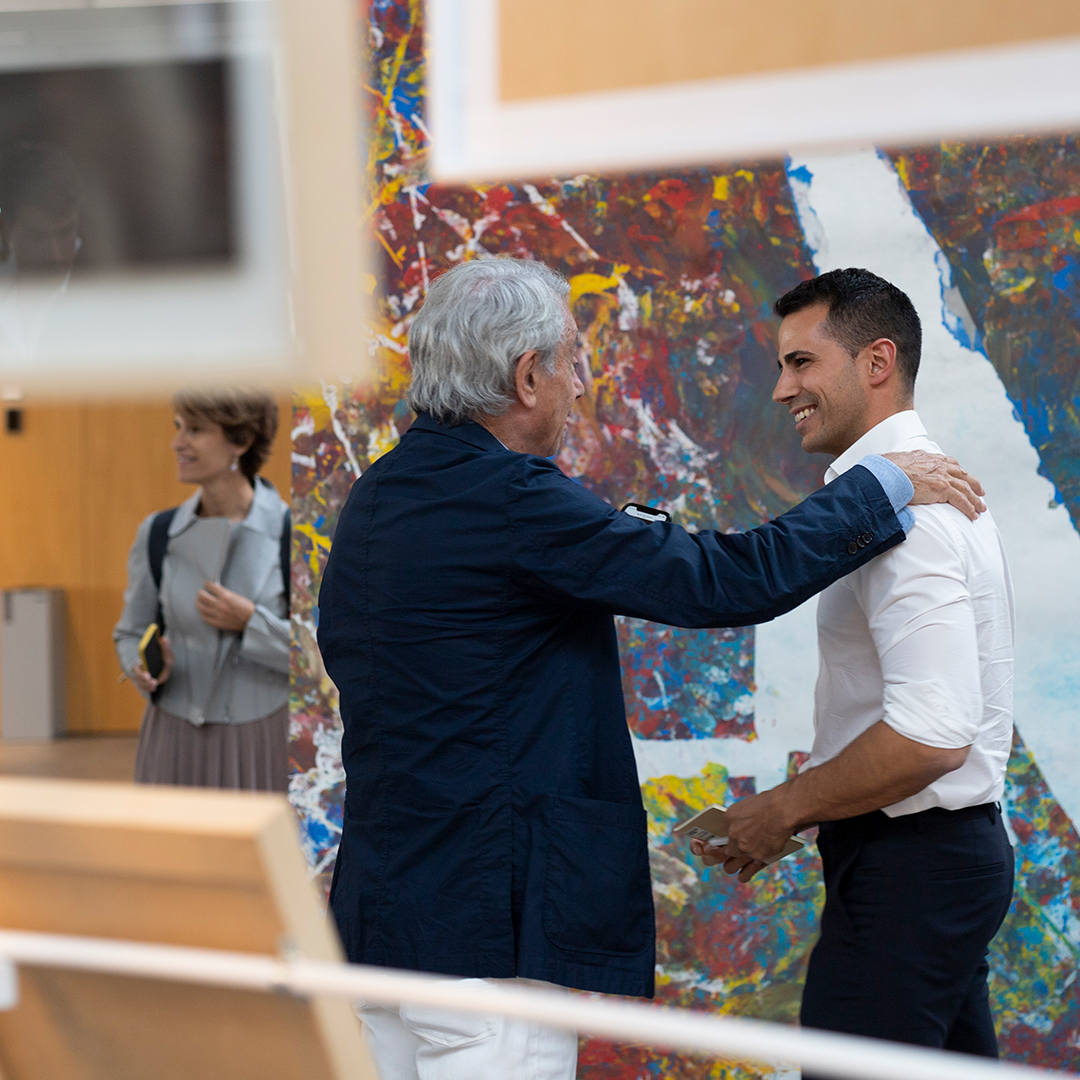
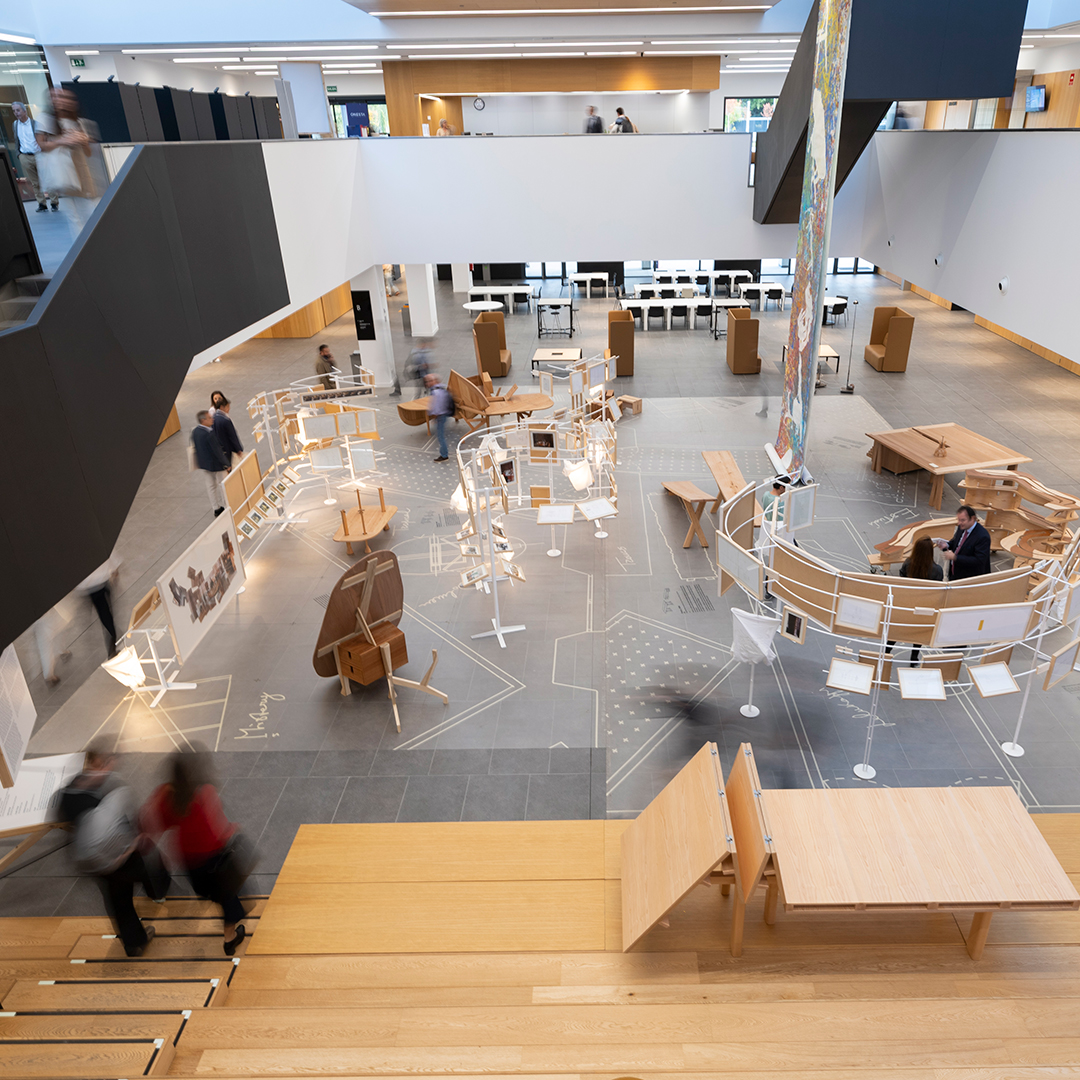
This exhibition was created with the aim of paying tribute to the Catalan architect Enric Miralles in his multiple facets as a creator to mark, in 2020, the 20th anniversary of his death.
The exhibition was organised by the Enric Miralles Foundation with the support of Barcelona City Council and the Autonomous Government of Catalonia, in collaboration with the Disseny Hub and AHEC, Onesta, Carpintería La Navarra and with the sponsorship of Artyplan.
It was an unprecedented exhibition of the architect and designer’s work. It included furniture and objects designed for his own use throughout his life, along with unpublished plans, drawings and sketches of the process of creating these pieces. The exhibition brought all these items together for the first time.
It featured more than 20 pieces, including the tables ‘Inestable’, ‘Dolmen’, ‘Troncs’ and ‘Tropical’, the ‘Lelukaappi’ bookshelf, inspired by the work of the architect Alvar Aalto, and several chairs used in projects such as the Scottish Parliament and the headquarters of the Madrid Circle of Readers. Light fixtures could also be seen, which Enric had started to design but had never completed.
The structure of the exhibition was intended to symbolically reproduce the private home of Miralles and Benedetta Tagliabue. The furniture was distributed in the space in its original position, and sketches and drawings showing the design of these objects could be seen on the walls. Some photos of the architect’s family life featuring this furniture were also on display. The light points designed by Miralles lit up the furniture and were also used as decorative elements.
In his creative process, Miralles continuously sought to bring his works to life. This desire is also embodied in his photographic collages, in which he gives movement to the image, as shown in the MIRALLES exhibition, which included photos and collages that were part of the tribute. At the Disseny Hub, you will be able to appreciate how he sought to give life and movement to his furniture designs.
TOCA MADERA

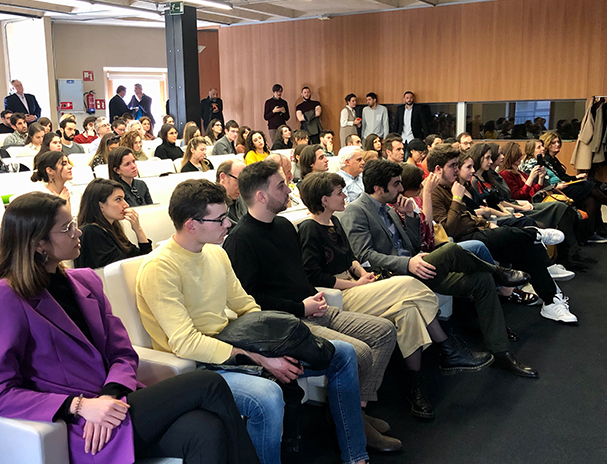


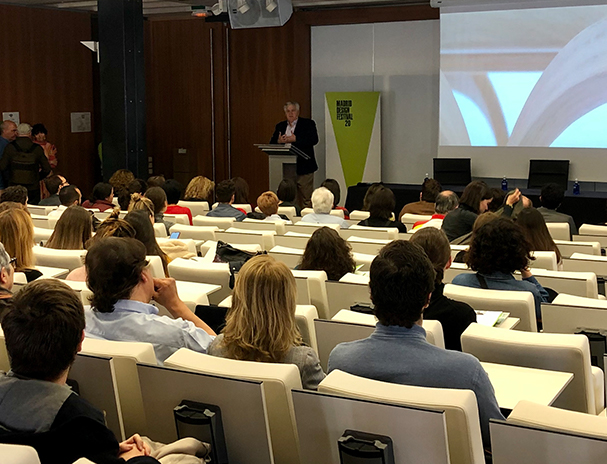
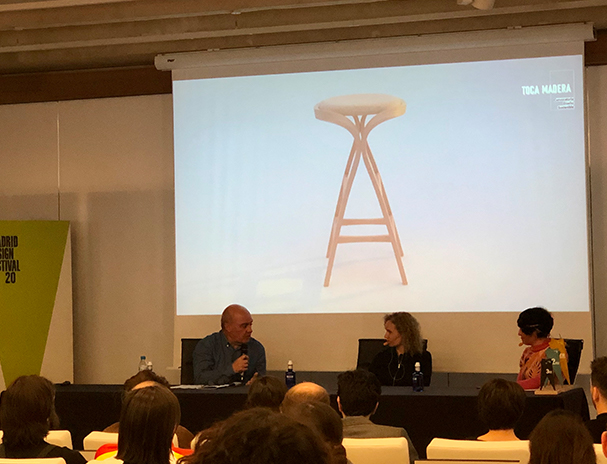



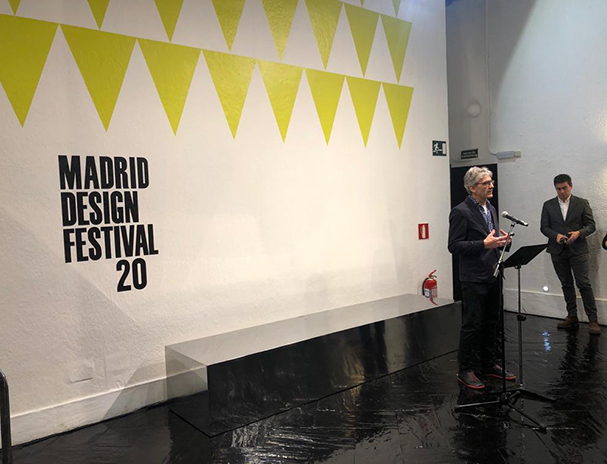

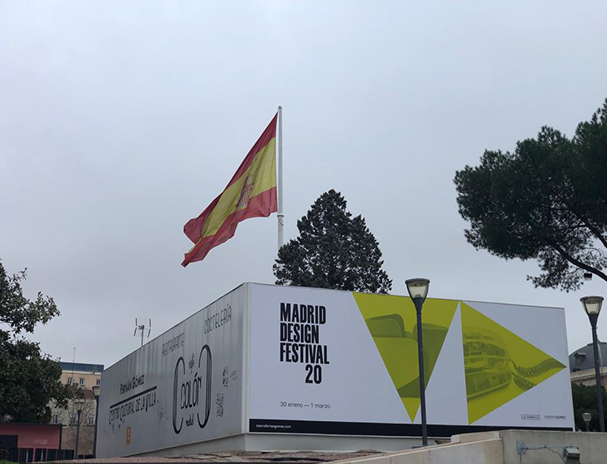

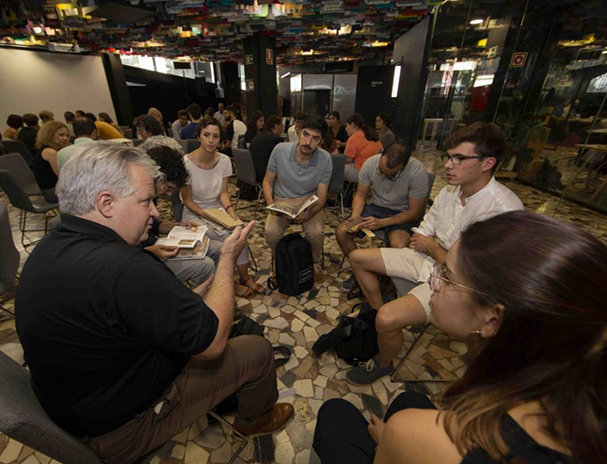
In the organisation of this initiative, we collaborated with the Research, Design and Innovation Association (AIDI) and AHEC, along with 42 young professional designers selected from all over Spain. The challenge was to design “infinite items”, that is, items that last over time.
Participants learned how to design with wood, specifically American red oak. The aim of the project was to create the items to show society that a change of mentality is possible, in order to put an end to the throwaway culture.
Furthermore, during the Madrid Design Festival in February 2020, the 6 finalist projects, having been built, were exhibited and the Selection Committee chose the three winners who, in addition to the public recognition, shared a prize of 5,000 euros.
The first prize went to “From Cradle to Cradle”, a project by María Ruiz de Elvira Nadal, Celia Martínez Otaduy and Daniel Romero Pérez, a baby Moses basket that can be converted into a children’s playpen, finally transforming into two chairs for the adult to use for the rest of the child’s life.
María Soriano Rementería won second prize for her project “Dew”. For Maria, the only thing that lasts over time is change. For this reason, her design consists of a series of shelves, light fixtures and wall hangers that young professionals can take with them as they move from house to house and from city to city, as is often the case.
The third prize went to Andrés Mariño Maza for his project “Taburete Barlovento” (Windward Stool) in which he curved the wood according to the traditional ship manufacturing technique to obtain a more efficient aerodynamic shape that is also strong yet light.
BLACK FOREST
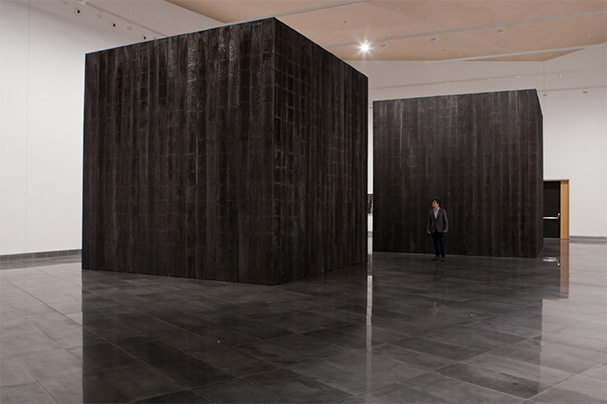
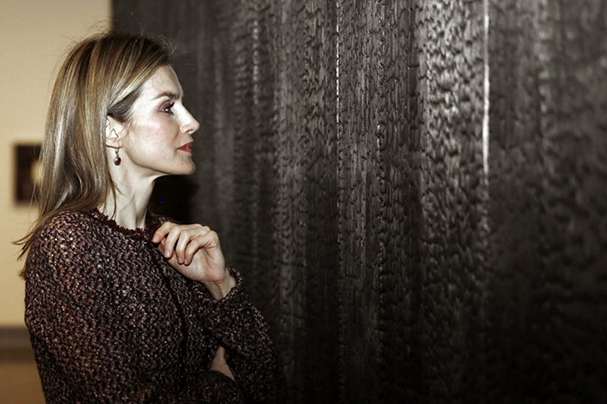
The “Black Forest”, by the artist Iñigo Manglano-Ovalle, is a work that invites us to reflect on the relationship between human beings and nature and on our identity as human beings in the modern world.
Onesta collaborates with art and culture through its sponsorship of the “Black Forest”, a work of art exhibited at the University Museum of Navarra on the occasion of the Museum’s inauguration.
The monumental cubes on display in the hall represent cabins built from 4-metre-high burnt wood. They are made of Radiata pine wood, charred using a Japanese architectural technique known as “Shou Sugi-Ban”. This process creates a charred, black and silver exterior, which is naturally resistant to weather and rotting. The cubes are accompanied by large-scale photographs taken at the Quinto Real forest and charcoal photographs of places around the world. Exposing a charcoal emulsion paper directly to sunlight produces an intensely black image that represents light as an absence of image itself.
The work reflects on relevant issues of our time, such as the relationship of human beings with nature, the environment, the economy and pollution. It also explores the idea of the cabin and the forest as places of mystery and storytelling. Manglano-Ovalle uses charcoal and carbon as central elements in his work, playing with concealment and unveiling to allow spectators to experience the work and generate an inner light. Upon entering the room, only a large cube is visible, but as you walk around, you will discover another, even larger cabin. This technique is inspired by the thinking of the philosopher Martin Heidegger and his poetic conception of existence.

